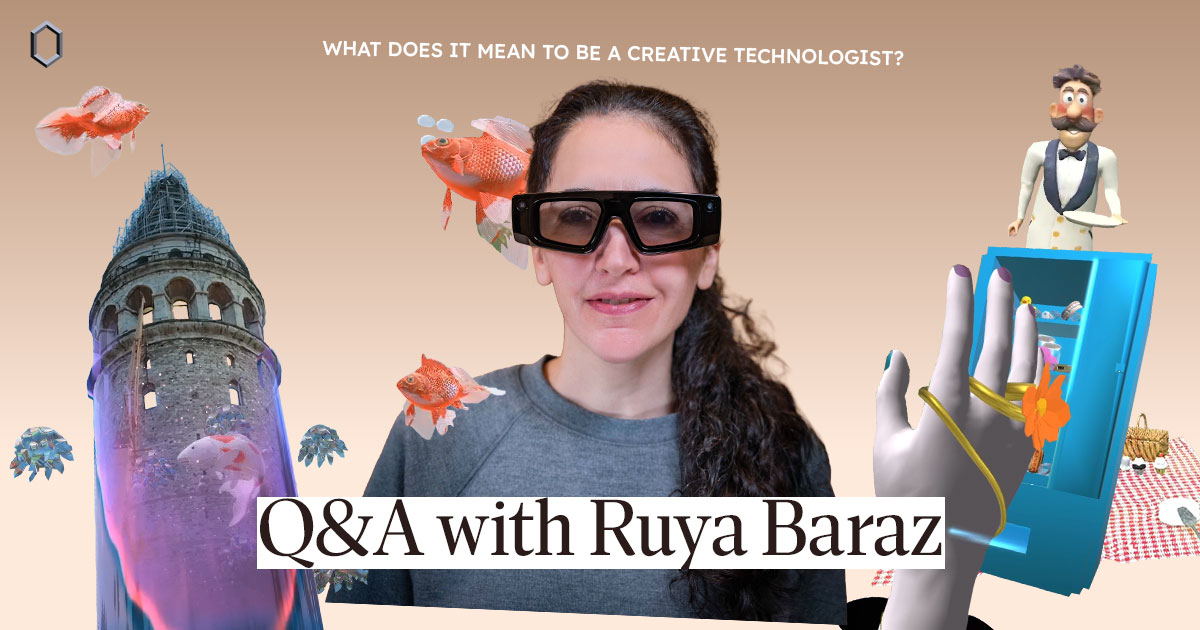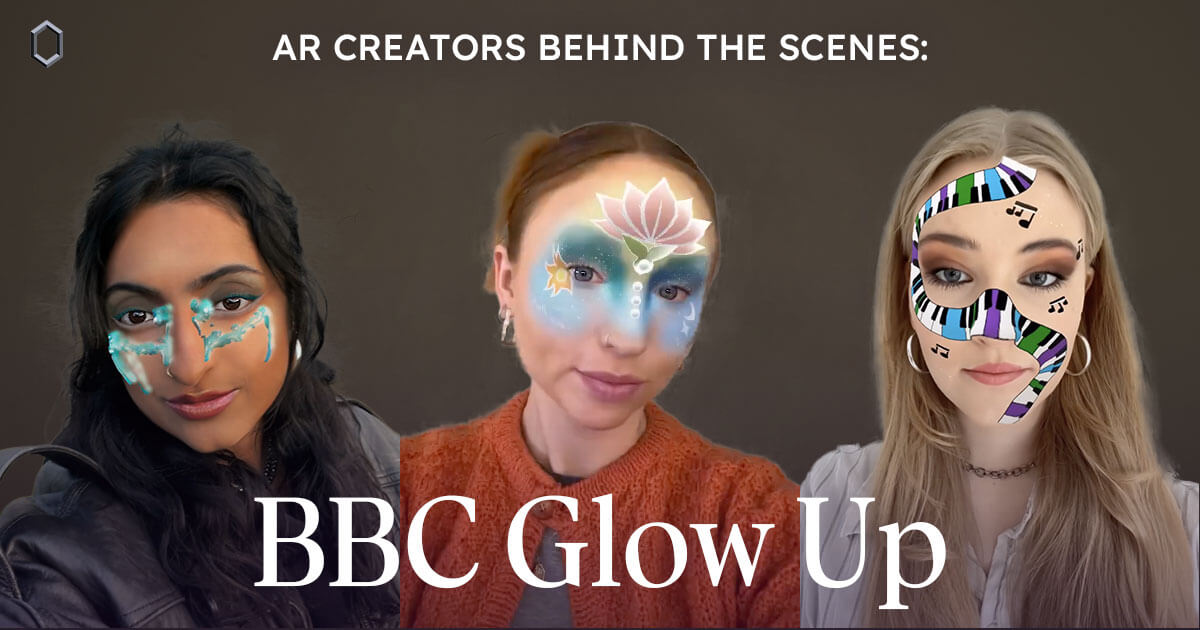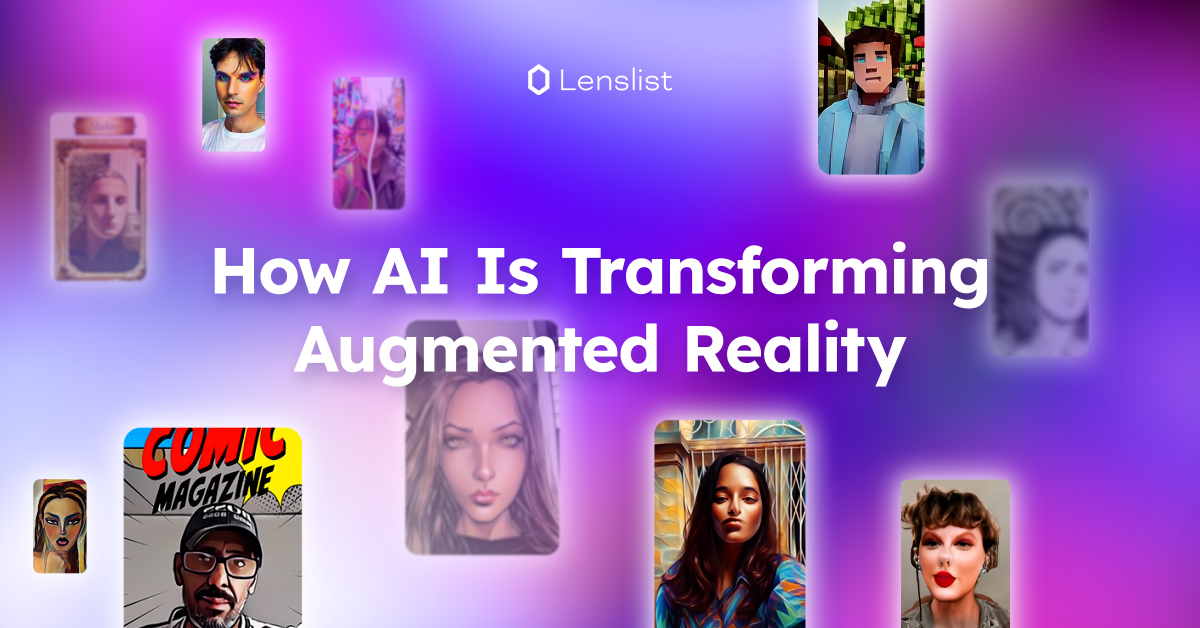What does it mean to be a Creative Technologist? Q&A with Rüya Baraz

For much of our lives, art and science have been framed as opposites. From an early age, we’re often encouraged to define ourselves by one or the other, fueling the divide between creative fields and STEM (Science, Technology, Engineering, and Mathematics) when choosing hobbies, education, or even careers. While that may have been true in the past, today the two increasingly coexist.
Technology has become a powerful outlet for creativity, offering artists new ways to make their work more immersive, interactive, and accessible. Like any other medium, it can be shaped, experimented with, and brought to life, with people at the center of the experience.
Still, if technology is the art and users are the audience, who is the artist? That’s the question we posed to Rüya Baraz, a Creative Technologist with experience in AR, AI, CGI, 3D modelling, graphic design, and more.
Rüya shared her perspective on the industry, the role of different platforms, her personal journey, and the opportunities technology opens up for artists to push their creative boundaries.
Introduce yourself! Give us a short bio.

I’m Rüya, a creative technologist and AR/CGI designer based in Istanbul. I’ve been working in AR since 2019, creating interactive experiences for platforms like Snapchat, TikTok, and previously Instagram. My background is in Visual Communication Design and over the years I’ve combined that foundation with technical skills to bring my visual concepts to life — from immersive multiplayer AR experiences to large-scale CGI brand campaigns.
What does being a creative technologist mean to you?
For me, being a creative technologist means mixing creativity and technology, and letting them influence each other to create something new. It’s about seeing how technology can make an idea better, tell a story in a different way, or make something feel real and unforgettable.
Can you tell us more about your work?
I create AR experiences that connect the digital world with real spaces, and this is actually my favorite way of using AR. My work includes location-based effects tied to landmarks, wearable AR like tracking designs on t-shirts, interactive experiences for Spectacles, and CGI projects that bring large-scale, surreal visuals into real environments.
I mostly use Lens Studio, Effect House and Blender for 3D work. I have also been experimenting with Snap’s Spectacles to make virtual elements feel like part of the physical world.
What has your journey been like so far? What path led you to become a creative technologist?
I first started creating AR effects on Instagram without even realizing it was ‘augmented reality.’ I loved the idea of changing what people see through their cameras and started experimenting more — adding interaction, using 3D, and building more complex experiences.
Later, I moved to Snapchat and TikTok, where I could do bigger projects with things like body tracking, multiplayer, and AI. Competitions and brand collaborations helped me grow faster, and now I work across AR and CGI, always looking for new ways to blend creativity with technology.
Could you share your experience working with various AR platforms such as Lens Studio and the newer YouTube Effect Maker?
I mainly work in Lens Studio because it’s powerful for advanced AR — it lets me build complex experiences for mobile, web, and Spectacles. I’ve only tested YouTube Effect Maker a little, but it felt simpler and better for creating quick, short-form video effects.
In Lens Studio, I usually plan larger, more interactive builds, while on Effect Maker I’d focus on faster, more visual ideas.
How do you go about trying a new tool, medium or platform?
When I try a new tool, I look up online tutorials, read documentation, and explore the templates that platforms like Lens Studio, Effect House, and 8th Wall offer. These templates are great for playing around and testing features. The main idea is not to be scared of making mistakes.
I studied Visual Communication Design and was always more of a design person, so I started with zero coding knowledge. Now, tools like ChatGPT and Claude.ai make it much easier to get help with coding and achieve amazing results, even if you’re not a developer.
What has been your most challenging project or tool you’ve learned to date, and how did you overcome the obstacles?
One of my most challenging projects was a multiplayer Spectacles lens that combined AI-powered speech recognition, GPT filtering, and Snap3D object generation. I had to make sure all objects were perfectly synced across all players’ views. At first it felt overwhelming, so I broke the project into smaller parts and tested each one separately.
This step-by-step approach made it easier to solve problems and bring everything together into one working experience. I also got a lot of help from ChatGPT and the Spectacles Reddit community while building it.
Which projects would you consider your biggest successes and accomplishments? Or maybe top projects that have led you to further opportunities?
Technically, my biggest success was the multiplayer Spectacles lens with AI-powered speech recognition, GPT filtering, and Snap3D object generation — it was the most complex project I’ve built and taught me a lot.
Visually, I’m proud of the Eiffel Tower location-based AR experience I created in Snap for the Paris Aquarium. It used the real-world setting as part of the effect, creating an immersive experience that connected perfectly with the location.
How would you describe your experience collaborating with brands on creative projects?
I think the most important thing when working with a brand is trusting the designer’s creative style. The best projects happen when the brand is clear about what they want but still gives me the freedom to experiment and try new ideas — that’s how we can make something unique that still connects with their audience. That trust is what makes a project memorable instead of just another campaign.
What are the advantages and disadvantages of working across multiple disciplines? Do you think your approach is future-proof?
Working in AR, CGI, and design makes my work more creative and flexible. I can take ideas from one area and use them in another, which helps me come up with new concepts quickly. The hard part is keeping up with learning in each field. But I think this way of working will last, because technology and creativity are coming together more every day, and knowing both will be even more important in the future.
Are there any new creative directions or disciplines you’d like to explore in the future?
I want to push wearable AR further, making designs that feel more alive and interactive. I also want to create more AR experiences for real-world events, where virtual elements interact with the space and the crowd.
Another big goal is to work more with AR mirrors — I haven’t explored them as much as I’d like, but I’d love to integrate them into my work. Outside of AR, I’m also interested in exploring generative AI for creating movies and videos. I’ve been experimenting on my own for the past 1–2 years, but I’d like to dive deeper into it.
Rüya’s journey demonstrates that being a Creative Technologist isn’t about choosing between art and technology; it’s about combining them, opening your talent to new opportunities. As tools evolve and platforms expand, artists like her remind us that creativity doesn’t just adapt to technology; it thrives through it, shaping experiences that feel more human, immersive, and connected than ever before.
A huge thank you to Rüya for sharing her thoughts and experiences with us! 👏💜
At Lenslist, one of our favourite things we can contribute to is giving Creators, artists, and developers a platform to talk about what we all have in common: love for AR and innovation, the constantly changing technological landscape, and passion for creating.
Looking for the best way to implement AR into your marketing strategy? 🔍Try out the AR Brainstormer to create unique campaign ideas, use our AR Search engine to look for inspiration, or simply schedule a consultation with us – we’ll be happy to help! ✨


